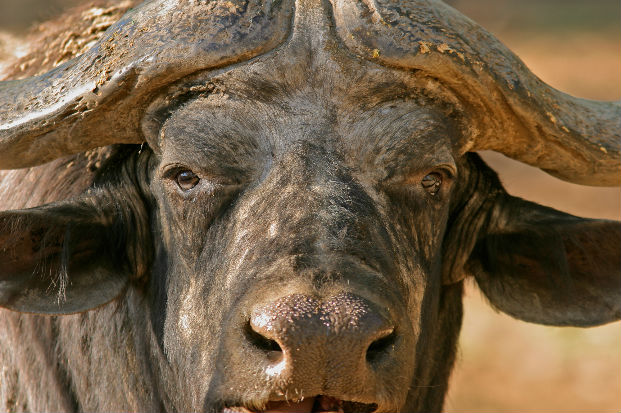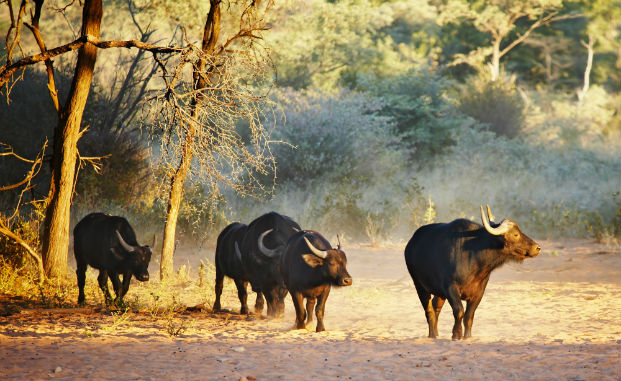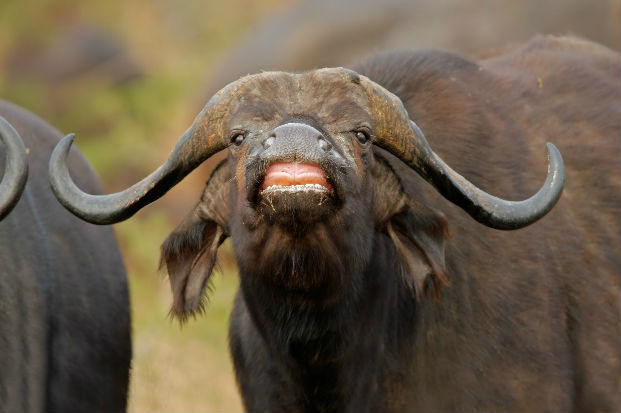The African buffalo has the appearance of a domestic cow with the exception that both the male and female have an impressive set of horns. Buffalo herds can number as many as 2,000 individuals but a herd of 200 is more common. They require plenty of grass, access to water and shade where they will go to in the heat of the day to lay up and ruminate.
The African buffalo is one of the Big 5. To find out how this term came about and the other four animals that make up the Big Five please check out our article: 25 astonishing facts about Africa’s Big 5.
Vote for the fact you find most fascinating
Because buffalo eat a large quantity of coarse material they need to drink regularly, up to twice a day managing as much as 34 litres in just 6 minutes.
If lions attack a herd of buffalo they do so at great risk as buffalo will often retaliate with a mobbing attack.
Older buffalo bulls may choose to drop out of the herd and wander alone or in small groups. These animals are known as “dagha-boys” referring to the Zulu word for mud given their preference for wallowing.
The movement of a herd is determined by individual buffalo called “pathfinders”. Despite this important role these animals do not have to be high ranking.
Buffalo are no slouches and can reach speeds of 56 KPH, that’s 15.6 metres per second.
Herd mentality is very strong, in some circumstances it will force a mother to abandon her own calf.
A buffalo bulls horns can grow to be 100 cm wide, 141 cm along the curve.
Rinderpest was a disease in the 1890s which almost wiped out the buffalo, estimates say that for every buffalo that lived, 10,000 died.







